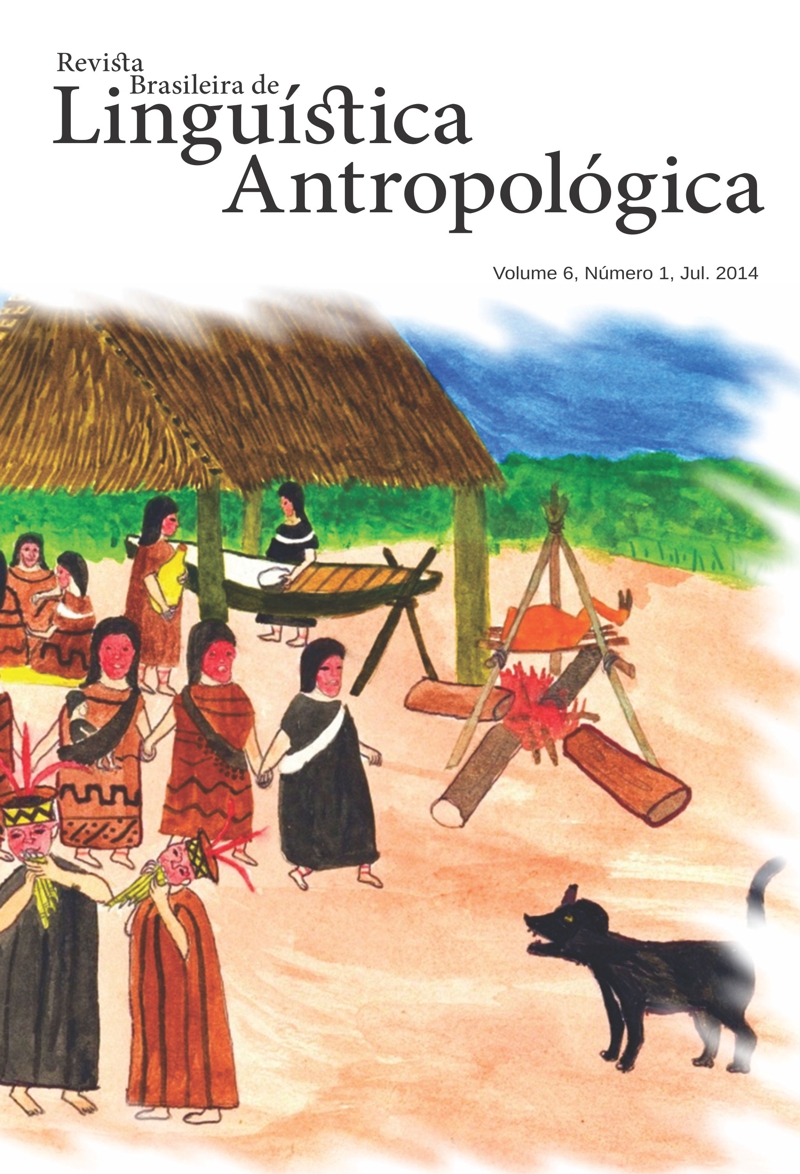Gender and classificatory suffixes of discretization in Ocaina (Witoto)
DOI:
https://doi.org/10.26512/rbla.v6i1.21060Keywords:
Gender. Classificatory suffixes. Ocaina. Witotoan. Amazon.Abstract
Ocaina has both gender markers and classificatory discretization suffixes (cf. classifiers), areal and typological feature under-documented. Gender classifies the nominal lexicon into animate vs inanimate and reflects beyond the noun itself through agreement: pronominal forms. The second category appears directly on the morphology of the subclasses generic and mass nouns (cf. uncountable nouns). It is not a classificatory noun device but the way in which nouns specified with these suffixes became discret: for this reason they are told “clasificatory discretization” suffixes. This paradigm is one of the means marking the singular number category. We distinguish the “gender” or “grammatical gender” category, a classificatory device, from “semantic gender”: masculin vs femenin, marks that belong to the paradigm of discretizer suffixes (number category).
Downloads
References
Aikhenvald, Alexandra Y. 2011. Classifiers. In: Oxford Bibliography Online. Oxford University Press, New York, NY, USA: 1-40.
Corbett, Greville. 2007. Gender and noun classes. Language typology and syntactic description. New York. Cambridge University Press. Vol 3: 241-279.
Culioli, Antoine. 1985. Notes du séminaire de DEA 1983-84. Université Paris 7.
De Vogué, Sarah. 1989. Discret, dense, compact: les enjeux énonciatifs d’une typologie lexicale. La notion de prédicat. Paris, Université Paris 7: 1-23.
Fagua, Doris. 2013. Aspects morphosyntaxiques de l’ocaina. Autour des classes lexicales. Tesis doctoral, Universidad de París 7, Denis Diderot.
Fagua, Doris. [en prensa] “Sintagma y clasificación nominales en ocaina (witoto): clases de nombres, género y sufijos clasificatorios de discretización”.
François, Alexandre. 1999. “L’illusion des classificateurs”. Faits de langues N°14: 165-175.
Grinevald, Colette. 2004. “Noun Classes in African and Amazonian languages : towards a comparison”. Linguistic typology N° 8, N° 2 : 243-285.
Grinevald, Colette. 2002. “Making sense of nominal classification systems. Noun classifiers and grammaticalization variable”. Ilse Wischer & Gabriele Diewald (Eds.). New reflections on Grammaticalization. Series: Typological studies in language, Vol. 49. Amsterdam/Philadelphia, John Benjamins B. V.: 259-275.
Lathrap, Donald. 1982. “La antigüedad e importancia de las relaciones de intercambio a larga distancia en los trópicos húmedos de Sudamérica precolombina”. En: Amazonia peruana, 4 (7): 79-97.
Petersen de Piñeros, Gabriele. 2007. Nominal classification in Uitoto. International Journal of American Linguistics 73(4): 389-409.
Queixalós, Francesc. 2005. “Posse em Katukina e valência dos nomes”. Novos estudos sobre línguas indígenas. Brasilia, Editora UnB: 177-202.
Queixalós, Francesc. 1998. Nom, verbe et prédicat en sikuani (Colombie). Louvain/Paris, Peeters.
Seifart, Frank, Doris Fagua, Jorge Gasché & Juan Echeverri. 2009. A multimedia documentation of the languages of the People of the Center. Online publication of transcribed and translated Bora, Ocaina, Nonuya, Resígaro, and Witoto audio and video recordings with linguistic and ethnographic annotations and descriptions. Nijmegen, DoBeS-MPI. http://corpus1.mpi.nl/ds/imdi_browser/?openpath=MPI77915%23.
Seifart, Frank. 2005. The structure and use of shaped-based noun classes in Miraña (North West Amazon). Nijmegen: Max Planck Institute for Psycholinguistics : 77-179.
Seifart, Frank & Doris L. Payne. 2007. Nominal Classification in the North West Amazon: Issues in Areal Diffusion and Typological Characterization. International Journal of American Linguistics 73 (4): 381-387.
Downloads
Published
How to Cite
Issue
Section
License

This work is licensed under a Creative Commons Attribution 4.0 International License.
Authors who publish in RBLA agree to the following terms:
a) Authors maintain the copyright and grant the journal the right of first publication, and the work is simultaneously licensed under the Creative Commons Attribution License, which allows the sharing of the work with recognition of the authorship of the work and initial publication in this journal.
b) Authors are authorized to assume additional contracts separately, for non-exclusive distribution of the version of the work published in this journal (eg, publish in an institutional repository or as a book chapter), with recognition of authorship and initial publication in this journal.
c) Authors are allowed and encouraged to publish their work online (eg, in institutional repositories or on their personal page) at any point before or during the editorial process, as this can generate productive changes, as well as increase impact and citation of the published work.







